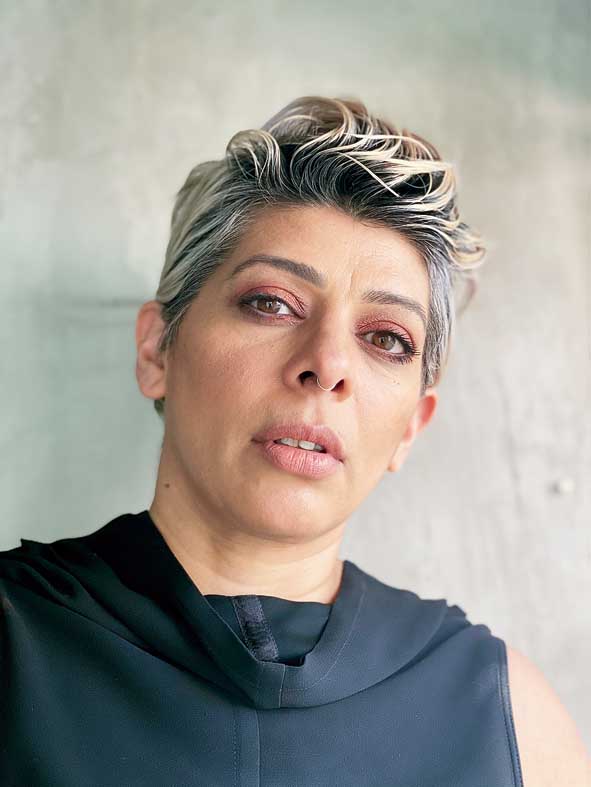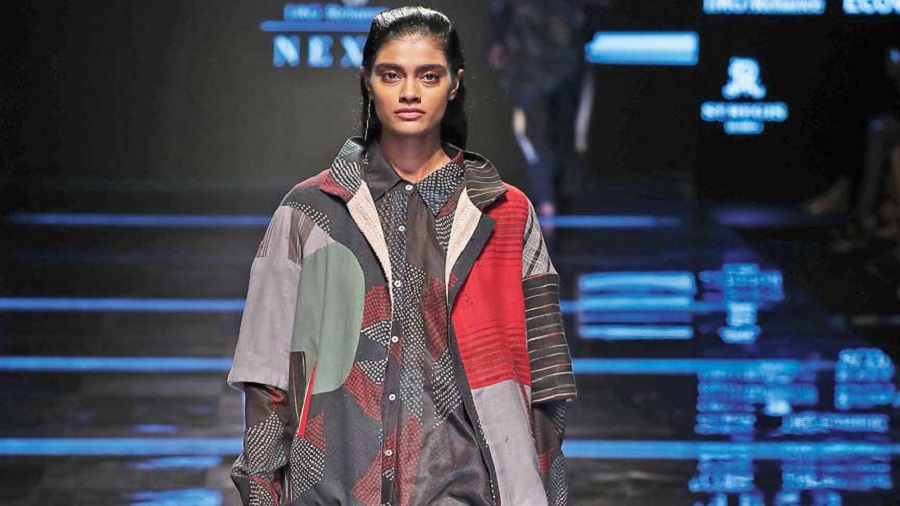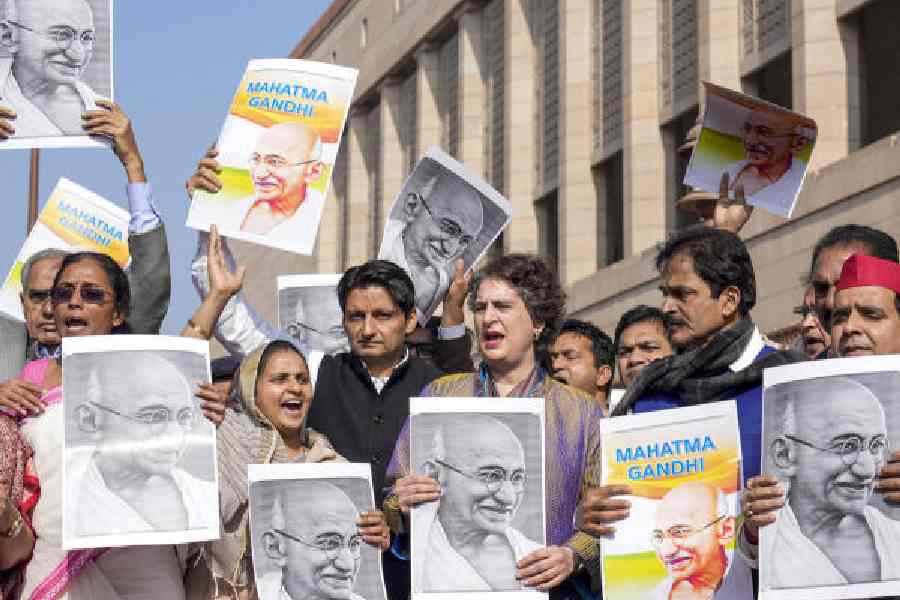Urvashi Kaur talks like she designs. Details are of consequence. “It’s really about having closer connections and understanding people’s intricacies. Which is why these tiny details make a whole lot of difference,” she says. She’ll listen to you and ask you questions before replying. And, you get a sense of her heart. Simple and beautiful. Yes, much like her designs which are “almost hand-done”, versatile, inclusive, strongly individualistic and reflective too. Like the observant Urvashi. We caught up with the designer who is currently in the UK with her family.
When did you travel to the UK?
We travelled out in early May. My son had a doctor’s appointment. We have a home here. So, it was like moving from one home to another.
How have you adapted to the pandemic?
I come from an army background. Change has been constant in our lives. Adapting to any change doesn’t take us very long. I think I have been to 12 schools in 12 years. My studio is at my home. It allows me the freedom to walk in and out of workspace and be around my family. I’d always be available when my three kids came back from school. The only difference was my staff couldn’t be around as much. Zoom played a key role. This has given us that time to introspect and then sort of realign ourselves with this new reality.
Earlier you were in this race. As a brand, we have always worked with small productions. We have never been on sale. Now we are talking about it to our clients because there is this big shift that is going to happen and people are going to be wanting to only spend on things which have a longer shelf life.
You just launched your SS’20 collection Vasara. The pieces look calming…
We managed to do a product shoot and it looks beautiful. It was prophetic in a way, with all the turbulence, you want to find some peace and serenity in the world. That was at the back of my mind when I was designing it and creating it.

Urvashi Kaur
You have also been working on a series of digital artworks…
My team and I have been working on some content that is a visual, creative expression of everything we’ve been feeling and experiencing as a fallout of the pandemic. It’s a series of illustrations that represent the label’s beliefs and ideology against the backdrop of the world today.
The label is more than a decade old. Do you remember how it all started?
I have a theatre background, studied history, worked with a designer and then I decided that I want to do fashion. I was first acting and then doing costumes for theatre. Then I went to Paris to study fashion at ESMOD. They teach in French and I speak French. I was in a French school in Algeria. So language was not an issue. I was into exports too.
My first collection at Wills (Lifestyle India Fashion Week) was all muslin, ikat, ecru and some of the silhouettes that emerged in that collection have become signature. There was a purity and simplicity. With every passing collection, I began exploring more and more.
You were naturally drawn towards Indian art and craft…
My dad (Gen. retd J.J. Singh, the former chief of army staff and governor of Arunachal Pradesh), was in the army. So, I travelled across India. You haven’t heard of these places. People haven’t seen these places. My mom being an artist, she was in love with the beauty of the people and their stories. It is just wonderful to get a glimpse into their lives. Exploring Indian weaves and our traditional crafts and techniques and weaving them into my clothes was something very natural for me. It is subliminal.
Then after school I was in Delhi. I did my university in Delhi and now I live there, but I am travelling all over the world. So, for me travel is second nature. A bit of that nomadic lifestyle is evident in my work because it is all about layering and taking off the layers and being in comfortable clothes that you can’t feel the weight of.

The digital artworks developed amidst the pandemic, has been teamwork Sourced by the Telegraph
Natural textiles that breathe and something that lends a lot from our Indian heritage but I try to make it as contemporary, practical and functional as possible. A lot of young people then have a look at it and say: ‘Oh, I can carry this off!’
What were the challenges when you started out?
We were literally a handful. Sustainable designers and khadi was simply not a buzzword. I did it because it was organic to me. Now they have made it a trend. I am like… ‘ please, it’s not a trend’. It has been there forever and it has a deeper meaning with our Indian consciousness. Back in time, it was a larger purpose. I think now India and the world is coming to a point where we need to start and look beyond our personal desires and needs. How we can create and consume consciously. Even if people think of it as a trend, it would still permeate and push people to support more weavers, artisans, crafts.
When I started, the challenges were the weavers, the timeline because this is a disorganised industry I think. Also, stores weren’t buying or investing in collections that were khadi based and working at a price. Pret was at its nascent stage at that time. It was a challenge to convince. We lost many orders because we didn’t get our fabric on time. It’s been a journey. Now, it’s better, apart from the economic slowdown where everyone is rethinking retail.
I work with The Handloom School by Sally Holkar (in Madhya Pradesh) who is inviting weavers’ children to come learn weaving from different parts of the country. We buy what they produce and collaborate with some form of design intervention.
You have worked with various clusters…
I have done some collections with the weavers of West Bengal in jamdaani and then kota. I continue to keep kota in almost every collection. It’s perfect for our country and I love grains and textures. I work with weavers who develop khesh, which I turn into layers and jackets. I work with a lot of khadi, my favourite, from Bhuj and Andhra Pradesh. I love Chanderi and also matka. I also use noil. It is a lot of fun to work with because you can use it in so many different ways and it is so lightweight.
What is the language of layering for you?
It is the key to accessorise and change a look. You can put it on in the evening, change your lip colour and put on an accessory or two and you are sorted from day to evening. Everybody can find their best combination. And, we are also so layered as human beings.
Your collections have no seasons…
Traditionally, I don’t label because I promote trans-seasonal clothing. We need to reinforce the idea that something which is beautiful and aesthetic and goes with your personality and something which you have chosen with a lot of love, should not be discarded every six months or sooner. I believe it should be passed on and worn as many times as possible.
People are just about embracing androgynous dressing and gender fluidity. You have been exploring it for a decade now.
Simply wanting to break the norms and existing stereotypes and fashion provides us that freedom to express one’s own individuality. It is about blurring the norms and celebrating the individual because I am personally a non-conformist, so it was a natural choice.
So, how not to clone dress?
I want people to explore and find themselves a little more. Take risks. Women have been conditioned for years. They aren’t really great supporters of each other... but that takes you nowhere. The more women take ownership of their decisions and be financially secure, it gives them a certain power over how they dress, how they are. I want women to be free. We are such superpowers. We haven’t done a lot for ourselves and for women in general. I think if you have the confidence to not conform to an idea, then you enjoy the journey better because it is your journey.










